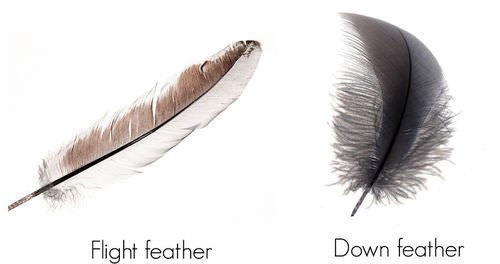Hanover Bald Eagle Blog # 25
May 24, 2019
In partnership with Pennsylvania Game Commission and Comcast Business .
Many of you are likely wondering when the Hanover eaglets will begin to show signs of wanting to leave the nest. While we can’t say for sure they ever truly want to leave the free food and good company of their home, bald eagles often fledge around 80 days after hatching. We are now at about 50 days since the first egg hatched. Fledging is defined as the time when the eaglets leave the nest. For some precocial species who depart much sooner after hatching, fledging is defined as when the young take their first flight.
There are several early signs that an eaglet is preparing to jump ship, and while we still have a long way to go before these two are ready, they are looking more like adults each and every day. During the first phase of nestling development, one of the most important physical transformation that takes place is weight gain. In fact, bald eagle nestlings experience the highest rate of weight gain out of all North American birds at an initial 180 grams per day! During the second half of development, beginning around the eaglet’s 27 th day of life, muscle growth and the production of flight feathers take top priority. These aspects of the eaglet’s anatomy must develop properly to support the adaptive lifestyle they will lead as an adult, soaring, fishing, and scavenging with vigor.
The emergence of flight feathers is one way to tell if an eaglet is nearing its fledging time, and by examining these feathers up close, scientists can make relatively precise estimates as to just how close a nestling may be to taking their first flight. Young feathers are surrounded by a sheath with living, multiplying cells, giving the inside a soft, moist texture. Eventually, these cells die and harden, and the sheath splits as vanes unfurl into a mature feather. This process can take multiple days, and there are often sections of an individual feather that break out of their sheath before others, meaning that during this phase one feather may simultaneously contain living and dying cells!

Comparison of flight feather with downy
Image Credit: Sami Sieranoja & Hans Braxmeier
These partially broken sheaths are visible to the naked eye upon close inspection and provide a helpful clue as to whether an eaglet has fully or partially developed flight feathers. This is one of the ways our late colleague Gary Bortolotti determined that 20 eaglets in his 1984 study were still only partially developed, even after leaving the nest. The fact that the eagles were sitting on the ground probably tipped him off as well. Eaglets and some other large raptor species will sometimes leave the nest before they are able to fly, remaining grounded for a day or two before taking to the sky!
As observers we are rarely, if ever, able to see an eaglet’s flight feathers close enough to make such discoveries. Therefore, we can use a behavioral indicator of flight feather growth that does not require getting up close and personal. Preening is a fancy word for feather maintenance, and the activity of preening heightens as nestlings begin to obtain their flight feathers. We are now seeing the Hanover eaglets preen every day, grasping a feather near the base and nibbling their way along the shaft which is the hard rigid “stem” so to speak, of the feather. This motion fulfills many crucial maintenance tasks, such as removing dirt and expired oils, re-locking barbs so that collectively the feathers keep their water-tight seal, removing parasites, realigning feathers for optimal aerodynamics, and keeping the feathers neat and appropriately patterned depending on a bird’s desired look (for camouflage, breeding, or other purposes). Allopreening, or partner preening, may also serve as a courtship ritual or bonding experience for mated pairs.
The health of an eaglet can impact whether or not their flight feathers develop properly. For example, a nutritionally deficient eaglet may have barbules with altered structures, and since barbules hook together to provide a solid airfoil and protective outer layer for the bird, they need to emerge in good health to fulfill their proper role. Liberty and Freedom have been doing an upstanding parenting job, and their offspring seem to be developing a handsome coat of healthy flight feathers that should serve them well during their first sky training sessions, now likely less than 30 days away!
Look for additional behaviors that may indicate that the eaglets are exercising their flight muscles, or otherwise preparing their bodies for the graceful days of soaring yet to come.
SOURCES
Bortolotti, Gary R. (1984). Physical Development of Nestling Bald Eagles with Emphasis on the Timing of Growth Events. Wilson Bull, 96(4), 524-542.
The Center for Conservation Biology. (2019). Bald Eagle Chick Development. Retrieved from https://ccbbirds.org/2011/04/30/bald-eagle-chick-development/
Cornell Lab of Ornithology. (2004). Handbook of Bird Biology. Princeton: NJ: Princeton University Press.
THANK YOU HAWK MOUNTAIN FOR THIS WEEK'S BLOG ENTRY!

RETURN TO HANOVER BALD EAGLE BLOGS
WATCH THE HANOVER BALD EAGLE LIVE CAMS
For over 20 years, HDOnTap has provided live streaming solutions to resorts, amusement parks, wildlife refuges and more. In addition to maintaining a network of over 400 live webcams, HDOnTap specializes in design and installation of remote, off-grid and otherwise challenging live streaming solutions. Contact press@hdontap.com for all media needs, including images and recordings.